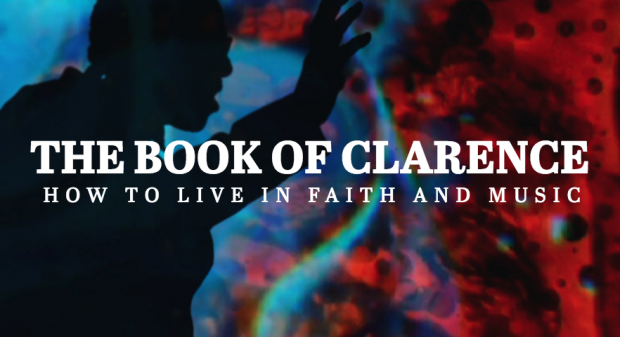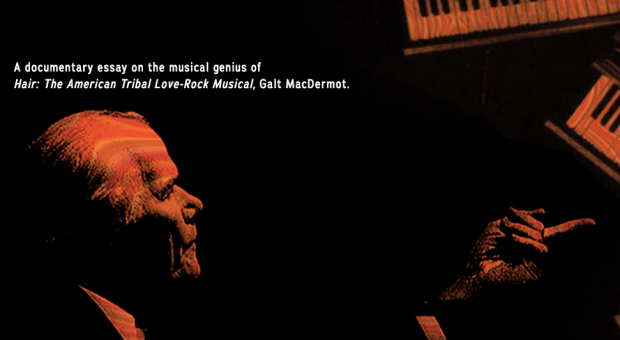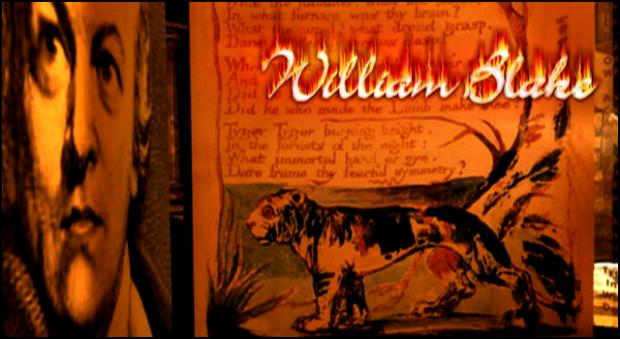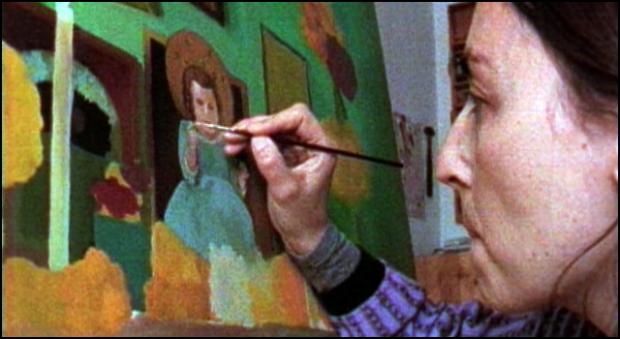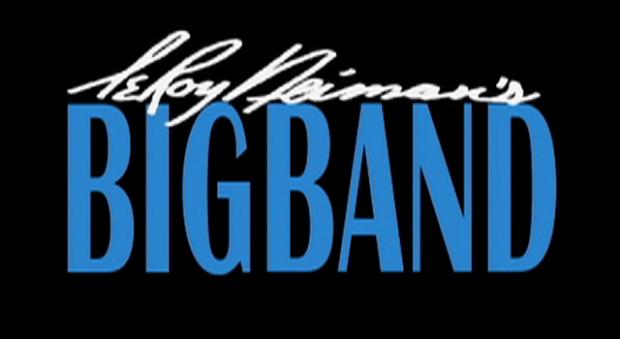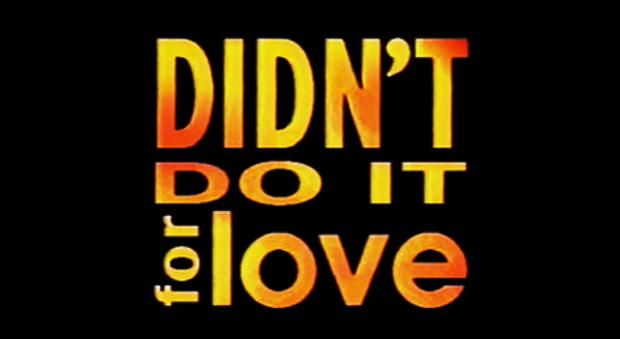Production
From a startling look at war-torn Bosnia to an illuminating look at one of the great poets of the English language, we approach all of our projects with open-minded respect and curiosity. With the skill, experience, and vision necessary to translate the real life excitement of the subject matter to the screen, the team at American Montage is ready to embark on a documentary of any type at anytime.
The Book of Clarence
This documentary essay follows the life of legendary blind gospel singer and founding member of the Grammy award winning, Blind Boys of Alabama, Clarence Fountain. We learn of Clarence’s life, music, and health through his dreamlike and hallucinatory memories, while he receives kidney dialysis. The memories are woven together with current performances with a small band, featuring long time collaborator and guitar player, Sam Butler Jr.
These performances are mostly intimate and take place in Clarence’s living room, in recording studios, and in African-American Baptist churches in the deep south of the United States: Baton Rouge, Birmingham, Mississippi, and New Orleans.
These elements are combined with scenes from Lee Breuer and Bob Telson’s celebrated theater piece, “ Gospel at Colonus”, featuring Morgan Freeman, Clarence Fountain, and the Blind Boys of Alabama filmed by PBS in 1985. In this presentation, the story of Oedipus as acted by Clarence parallel’s his journey to find a “happy death.”
STREETBALL: THE REAL WEST SIDE STORY
"IF YOU CAN GET OUT OF NEWARK, EVERYTHING ELSE SEEMS EASY."
-Andre Tippett
STREETBALL: THE REAL WEST SIDE STORY
The ultimate goal for this project was to create a template for other communities to be able to bring at risk use youth into sports programs; just as the coaches did in Streetball: The Real West Side Story with the students who became part of the 2007 championship Newark West Side Rough Riders football team. Along the way we tell the story of city Newark, the history of football in Newark featuring the legendary Barringer coach Frank Verducci and history of “Pop” Warner and how youth football came to be.
The “Real West Side Story” lends itself to repetition. At risk youth permeate our urban society and need the approach and program that the coaches created. Consequently, the impact we hope for is for urban schools to follow the steps that were made at Newark West Side High School and change the culture from that is poverty stricken, criminal and desperate to one that is educational, spiritual and hopeful.
Shapes of Rhythm: The Music of Galt MacDermot
SHAPES OF RHYTHM: THE MUSIC OF GALT MACDERMOT
It’s okay for the conversation about Galt MacDermot to begin with HAIR. After all, the iconoclastic composer’s score for HAIR helped change… well, it changed just about everything. HAIR changed hearts, minds and the way we think about war and peace and spirituality. It also created an unprecedented dialogue between mainstream theater and the youth culture. MacDermot’s score for HAIR was the pulse that beat out these changes like a drummer at the head of a parade. The music altered the relationship of rhythm and melody, of score and narrative, of show tunes and the pop charts. But more than anything else, MacDermot’s score taught Broadway how to groove. So, sure… it’s just fine to start the Galt MacDermot conversation with HAIR.
But to let the conversation end in 1969 with HAIR would be nothing short of a crime. To truly understand and appreciate MacDermot’s place in the pantheon of American Music, it is vital that the listener travel back and forth in time from that high-water mark of Americana that HAIR represents. You must travel back to 1961 and hear MacDermot’s first Grammy-winning hit, African Waltz, recorded by jazz great Cannonball Adderly, the polyrhythmic result of the composer’s time spent in the settlements of Apartheid-era South Africa. Jump way ahead in time to the Hip Hop revolution, and discover what so many African American musicians, DJs and producers found in MacDermot’s early work: a fountain of rhythms, breaks and beats that were poured like concrete into the foundation of a new musical form. Why is MacDermot so beloved, and so often sampled, by the hip hop community? The truth is found in the groove.
What is groove? And what makes MacDermot’s grooves so special, so irresistible? The answer is at the heart of Shapes of Rhythm: The Music of Galt MacDermot, the film series directed by Eric Marciano. For most composers and songsmiths, melody and rhythm are two separate parts of the whole. At their very best, most composers hope to craft songs that treat melody and rhythm as opposite sides of the same coin. They are related and complementary, but emanate from different sources to be soldered together later in the creative process. MacDermot goes further. To him, rhythm and melody are one, cohabitating on the same face of that coin. The melody creates the rhythm, and the rhythm carves out the tune. There is no separation of church and state in MacDermot’s compositions. That is the commonality found across MacDermot’s body of work. His melodies (whether sung or played) are so inextricably entwined with his rhythms, the listener is gifted with that undeniable and magical state of being that musicians call “groove.”
Songs are just like people. They walk and they talk, they whisper and scream, they can be serious or silly, hot or cold. Like people, songs are either groovy or they’re not. And no one writes groovier songs than Galt MacDermot. This is affirmed by the dozens of collaborators and colleagues who appear in Shapes of Rhythm: The Music of Galt MacDermot… people like The Public Theater’s Oskar Eustis, HAIR co-creator James Rado, director Milos Foreman, playwright John Guare, HAIR cast members Tim Curry and Kenny Ortega, hip hop artists Oh No, Madlib and Peanut Butter Wolf, and so many more. And no discussion of groove would be complete without hearing from MacDermot’s longtime collaborator Bernard “Pretty” Purdy (called the most recorded drummer of all time) and bassist Wilbur ”Bad” Bascomb, Jr. – the crack rhythm section and beating heart of MacDermot’s New Pulse Jazz Band.
The well-known quote, “Talking about music is like dancing about architecture” has been attributed to sources as disparate as Martin Mull, Miles Davis and Frank Zappa. Whoever it was that said it first could have been talking about the grooves of Galt MacDermot. All of the interviews in the world can only begin to tell the story. A deep understanding of the importance of this American original can come from only one place: the music itself. That is why director Marciano has chosen to build the films of Shapes of Rhythm: The Music of Galt MacDermot on live performances by Galt MacDermot and his New Pulse Jazz Band.
Two concerts, a 2007 performance at the NYC music venue The West Bank, and a 2010 concert at the legendary Public Theater (Home of the original Off Broadway production of HAIR), were filmed and recorded in their entirety by Marciano. These amazing performances will be the centerpieces of Marciano’s films. Despite the scribe’s best effort, words are pale and pathetic in describing the interplay between MacDermot, Purdy, Bascomb and the other master jazz and pop musicians on stage, and the joy shared between the musicians and the audience. Shapes of Rhythm: The Music of Galt MacDermot - the rhythm is real. It is palpable and visceral and emotionally moving. The groove is here and the groove is now.
“It’s not just theater music… it’s real music. Galt is bigger than theater. He’s part of the culture, part of music history.” – Diane Paulus, Director of Hair (2009 Tony-winning revival)
By James P. Wark
Director’s Statement
To be a director on a film is one of those titles that gives a person instant meaning; they are responsible for the vision and story that make up the movie. To be named a producer on a film is one of those titles that could mean virtually anything. You might have known a guy that knew a guy that helped secure a key location or you might have put up the first $ 10,000 or the last $ 10,000 or you might be friends with someone who had a burning desire and passion to do a film but didn’t know how and you did. So you helped them.
Such is my case with a movie that started out as Ear of the Heart: The Music of Galt MacDermot when I was a producer but is quickly evolving towards Galt MacDermot : The Groove of a film that I am directing. It’s a long story that started in the spring of 2005 and eight years later is going strong.
One morning and editor and friend I shared my office with a Jeff Lunger asked me what I thought about the idea of doing a film on the music iconoclast and the composer of "Hair", Galt MacDermot.
I asked him, "Where does Galt live?".
Jeff replied, "Staten Island".
"Is his number listed?" I inquired.
"Yes!" He said.
"Give him a call and ask him"
The rest is history. I suggested Jeff work with my wife Meredith (a true "Hair" fanatic) and before I knew it we were all on the journey to tell the musical biography of this excellent man,
Galt MacDermot, in a film called “Ear of the Heart: The Music of Galt MacDermot.
We spent many days and nights filming the project and Jeff spent many hours passionately editing and shaping the wonderful footage into melodious music montages and evocative sequences.
During the course of these eight years many changes occurred regarding Galt’s once quiet place in music history. First “Two Gentle of Verona” his Tony Award winning musical with John Guare and Mel Shapiro was revived in Central Park by the Public Theater in 2005 to much fanfare. Then “Hair” was revived in Central Park by the Public Theater in first 2007, then 2008 and then on Broadway in 2009 garnering a Tony for “Best Revival”. That same year Galt was inducted in the Songwriters Hall of Fame which featured the entire cast of “Hair” coming to the event to accompany Galt into the hallowed Hall of Music.
We filmed most of these events along with numerous full length gigs and concerts performed by Galt and his tight New Pulse Jazz band featuring legendary trap man Bernard “Pretty” Purdie,
Wilbur “Bad” Bascomb”, Allen “Wing” Won, John Frosk, Patience Higgins and his son Vince MacDermot. These shows were hot and they feature songs from Galt’s formidable canon of jazz, boogie woogie, blues, funk, soul, “Hairified” rock and unique shapes of rhythm.
We have all of his greats; the Grammy Award winning “African Waltz”, his often sampled, “Coffee Cold” the top five Hair hits “Aquarius/The Flesh Failures (Let the Sunshine In)”, “Easy to Be Hard”, “Hair”, “Good Morning Starshine”, “Ain't Got No / I Got Life”and the most excellent songs from the Broadway shows that crashed and burned as well as the grooves that make up his vast instrumental output. Can this music exist all in one film? No it can’t!
Sadly and unexpectedly our beloved friend and director Jeff Lunger passed away on October 22nd, 2012. On that day my title changed from producer to director. We had to carry on. I decided
To leave Jeff’s fine finished work “Ear of the Heart” intact as a paean to his efforts and vision and create the all new Shapes of Rhythm: The Music of Galt MacDermot.
The Groove Project is a multi-part series of feature films that presents Galt MacDermot’s award winning compositions in smoking gigs, swinging concerts, two full length productions of his major works “Hair” and “Goddess Wheel” filmed at Wagner College and through the voices of his many collaborators, friends, family members, tribe members and hip hoppers.
Here’s the list of people we have in Galt MacDermot: The Groove Project:
Galt MacDermot - The Groove Master, Composer, Piano
Bernard “Pretty” Purdie – Drums, New Pulse Jazz Band
Wilbur “Bad” Bascomb - Bass, New Pulse Jazz Band
Allen “Wing” Won - Saxaphones, New Pulse Jazz Band
Vince MacDermot - Trombone, New Pulse Jazz Band
Marleen MacDermot - Wife of Galt, Mother of Vincent
Marilyn McCoo and Billy Davis Jr. - The 5th Dimension
Julie Arenal - Original Choreographer of Hair
James Rado - Actor, writer and composer, the co-author, along with Gerome Ragni, of 1967's groundbreaking American tribal love-rock musical Hair.
He and Ragni were nominated for the 1969 Tony Award for best musical, and they won for best musical at the Grammy Awards in 1969.
Tom O’Horgan - Director of the hit musicals Hair and Jesus Christ Superstar and Lenny
Keith Kennedy - Director of the first University production of Hair in 1970 at the University of Memphis
Leata Gallaway - Five octave range singer, Origical cast member of Hair and appears on many of Galt’s recordings
Larry Marshall - Actor in Hair, Jesus Christ Superstar, Porgy and Bess and many more
Melba Moore - American disco, R&B singer and actress, played Dionne in original cast of Hair
Kenny Ortega- Cast member of Hair, director of Hocus Pocus, the High School Musical trilogy and Michael Jackson's This Is It concert tour.
Tim Curry - English actor, singer, composer from the original London production of Hair, Dr. Frank-N-Furter in the 1975 cult film
The Rocky Horror Picture Show,reprising the role he had originated in the stage productionsof The Rocky Horror Show. King Arthur in Spamalot.
John Guare – Lyricistof Two Gentlemen of Verona, Playwright of The House of Blue Leaves and Six Degrees of Separation
Norman Matlock - Actor, Singer Two Gentlemen of Verona
Alix Elias - Actor, Singer Two Gentlemen of Verona
Derek Wolcott – Nobel Laureate Writer and collaborator with Galt on two theater productions, “The Joker of Seville”, and “Steel”
Rusty Curcio – Choreographer and Theater Director, Head of Dance at Wagner College
Matty Selman - Lyricist for two collaborations with Galt, “The Tinderbox” and “Goddess Wheel”
Eothen Alapatt - Galt Archivist and producer ,Owner/President of Now-Again Records
Madlib Los Angeles-based DJ, multi-instrumentalist, rapper& music producer
Oh No - Rapper/producer California. Recorded Exodus Into Unheard Rhythms, exclusively sampling the music of Galt MacDermot
Rashad Smith Beat Creative and Producer, Bootsy Collins and many more
Peanut Butter Wolf - Owner/President of Stones Throw Records
Ray Roker - Founder URB Magazine in December 1990 former and still sometime electronic music DJ and club promoter
Annie Golden - Lead singer of The Shirts, appeared in the 1977 revival of Hair and the movie Hair
Milos Forman – Director of the film Hair, One Flew Over the Cuckoos Nest many more
Oskar Eustis, Artistic Director of The Public Theater
Diane Paulus - co-created The Donkey Show, is the Artistic Director of the American Repertory Theater at Harvard, nominated for the
Best Director Tony Award for her revival of Hair.
Will Swenson - Berger in 2009 revival of Hair
Bryce Ryness – Wolf in 2009 revival of Hair
Gavin Creel – Claude in 2009 revival of Hair
Cassie Levy - Sheila in 2009 revival of Hair
Sasha Allen – Dionne in 2009 revival of Hair
Dorius Nichols Hud in 2009 revival of Hair
Kacie Sheik Genie in 2009 revival of Hair
Elizabeth Wollman Author,The Theater Will Rock: A History of the Rock Musical, from Hair to Hedwig
Chuck Negron Singer, Musician one of the original founders of Three Dog Night and the singer on the hit "Easy to be Hard"
Yep, that’s the list so far. No wonder I need to turn this into a series rather than one feature. Shapes of Rhythm: The Music of Galt MacDermot has deep tracks!
Farewell to Bosnia, Part One
Farewell to Bosnia, Part One is a collaborative project between photographer Gilles Peress and Director Eric Marciano.
From February, 1994 through March of 1995, Peress' photographs of the Bosnian war traveled around museums and galleries in the United States, including the Corcoran Gallery in Washington, DC, P.S. 1 Gallery in New York City, and at the Southeast Museum of Photography in Daytona Beach, Florida.
In these locations, audience reactions were captured both in writing and in a booth called the Reaction Room. There visitors could comment privately on camera about the images that they had just seen.
This 25-minute video combines Peress' powerful photographic images with Maricano's ability to contextualize them with elements include historical footage of Yugoslavia, the selected letters by visitors to the exhibit and the audience responses from the Reaction Room to Mr. Peress' Farewell to Bosnia photography show. it is a unique film.
AWARDS:
Best of Category, Documentary, Missouri Video Festival, 1998
Semifinalist, Cinema Texas Short Film Festival, Austin, 1998
Best Documentary, Northampton Film Festival, Northampton, MA. 1997
James Moody: The Story of a Song
James Moody, the world-reknown saxophone player, was having a documentary made on his life and times by Diery Prudent a Brooklyn based fitness trainer and expert and storyteller and filmmaker Eric Marciano. Sadly, funding and overall support has never seemed to materialize for this special project about this most excellent artist and man.
Moody played with legends such as Charlie Parker and Dizzy Gillespie,and then branched out into his own career, culminating in a presidential award in May, 2000. His signature song "Moody's Moody for Love has been recorded far and wide by artist such as George Benson and Amy Winehouse.
For 17 years American Montage had been producing this project with Mr. Prudent, conducting interviews with other jazz players such as Todd Coolman, Jon Faddis and Paquito D'Riveira and filming numerous Moody performances of Moody and his band over those years. Someday we hope respect, support and love will come to this thoughtful and essential project.
Latin American Women Artists
was commissioned by Philp Morris to accompany the Milwaukee Art Museum's Latin American Women Artists show, originally curated by Geraldine Biller.
The museum required that as much artwork from 1915-1995 be represented in the film, including the work of 35 different artists from 20 different countries,
all within 25 minutes.
The solution was to shoot interviews against blue screen
and key in the artwork behind the subjects, allowing the viewer to see both artwork and the artist in the same frame.
Includes interviews with Elba Damast, Fanny Sanin, Soledad Salame, Maria Magdelena Campos Pons and art historian Edward Sullivan.
TO ORDER "LATIN AMERICAN WOMEN ARTSITS" CONTACT FILM MEDIA GROUP
LeRoy Neiman's Big Band
LeRoy Neiman's Big Band is one of Eric Marciano’s favorite projects. It is a unique film that explores the intersection of visual art and music and how the two inspire each other.
LeRoy Neiman's Big Band was commissioned by the world-renowned artist LeRoy Neiman and intertwines over 50 years of LeRoy’s paintings, water colors and works on paper with the music from jazz players that moved him, many of whom he knew.
The co-producer, director, cinematographer and editor Eric Marciano has years of experience integrating these two distinct, yet parallel worlds, which made him the ideal choice for this film. As LeRoy has stated, “He fundamentally understands both worlds.”
The concept for the film began with telling the story of the creation of one of LeRoy’s latest works. A large canvas inspired by Wynton Marsalis’ Lincoln Center Jazz Orchestra. Referred to as the “Big Painting” this work is 18 feet wide and 12 feet high. It features 18 of some the biggest personalities in jazz history including Ella Fitzgerald, Louis Armstrong, Duke Ellington, Benny Goodman, Charles Mingus, Miles Davis and Dizzy Gillespie.
Along with exploring the creation of the “Big Painting”, the film reveals over 100 other jazz related drawings, paintings, posters and works on paper allowing the film to include the music of Chet Baker, Sonny Rollins and Frank Sinatra.
LeRoy shares many of his personal anecdotes about these Jazz Luminaries.
The show was filmed in HDV and scanned at high resolution. Special care was taken tocapture theses works in all of their style, color and brilliance.
LeRoy Neiman's Big Band is like to be released anytime soon. If you are interested in discussing the film please contact Eric Marciano.
Fanny Sanin: The Critic's Eye - Explorations in Abstraction
Colombian-born painter Fanny Sanin is one of the world's greatest living color field painters. In 2003 Eric Marciano and Mayer Sasson worked together to create a definitive film that would encompass her entire evolving body of work.
A wide variety of unique sources, from photographs from the1940s, slides, gallery and museum catalogues from the 60's and 70's and video and film from 1970s, 1980s and 1990s were woven together in a seamless cinematic style.
Perhaps the most interesting approach to the film is the script, which was assembled from the written and filmed critiques and explanations from art critics from around the world.
This film succeeds at revealing the mastery of light and color that this special artist has brought to our world.
Didn't Do It for Love
AMI was the happy home to the post-production process for Monika Treut's "Didn't Do It for Love." Under a tight schedule and even tighter budget, AMI did it all, from picture cutting to full sound mix.
"German helmer Monika Treut's ongoing journey through the outer reaches of feminism and sexuality reaches "Didn't Do It For Love," a portrait of Norwegian-born actress-turned-sex therapist Eva Norvind, whose powerful personality triumphs . . .
Cable and outre fest slots are the snug homes or this often fascinating item, which is as frank in approach to its subject matter as the lady herself."
-- Derek Elley, Variety, March 9-16, 1998
Distributed by First Run Features.

